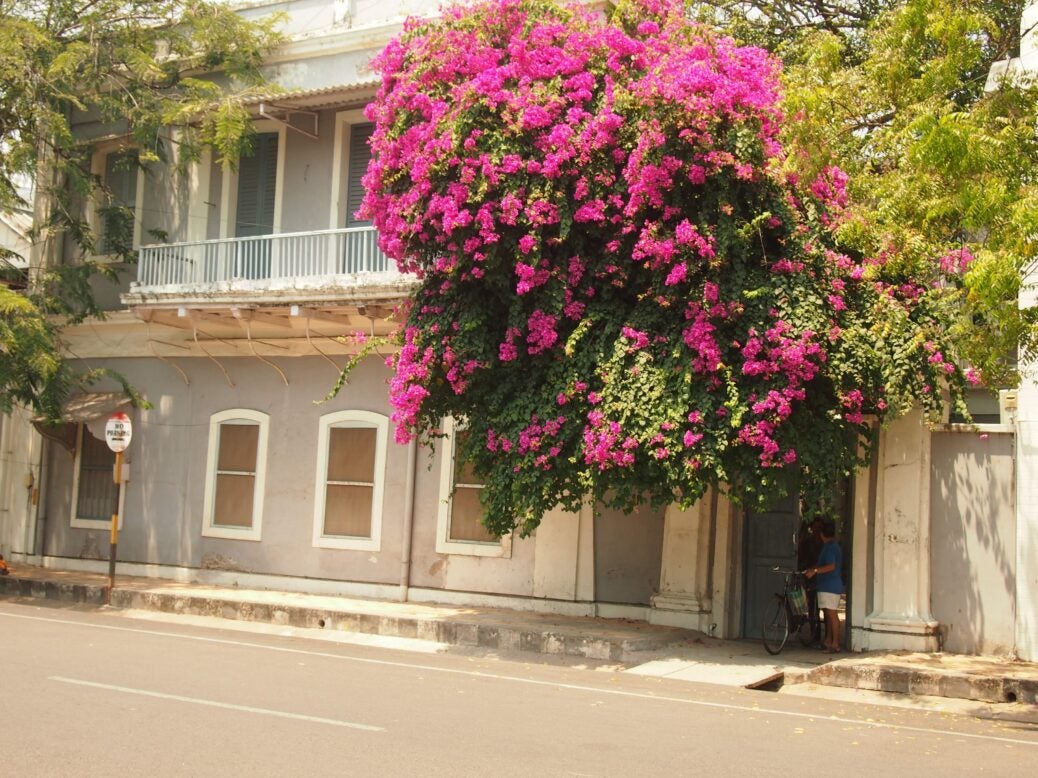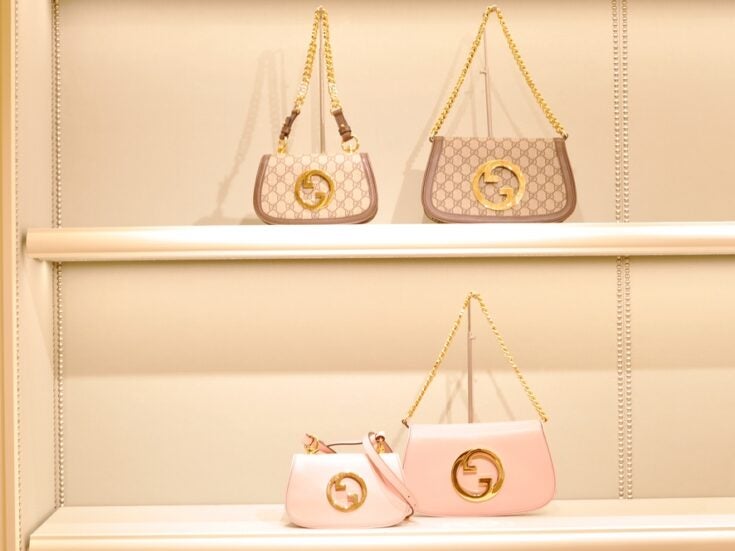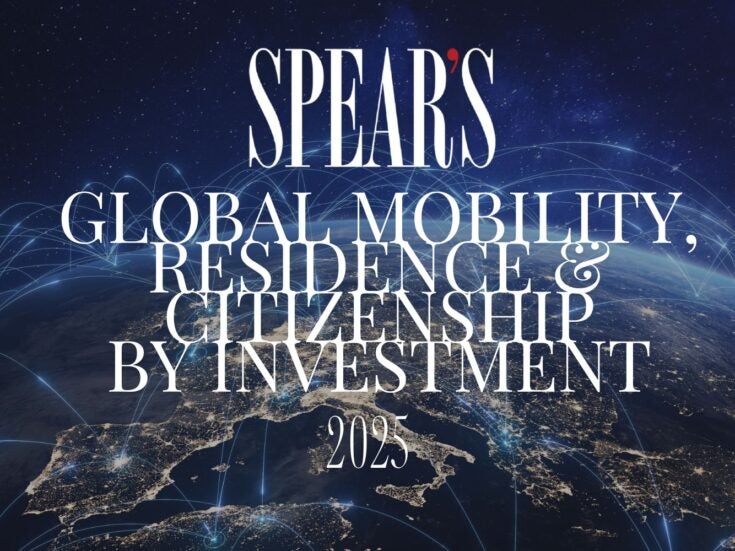
India may well be leaving its British colonial past behind, but one quiet corner of the country remains resolutely French, writes Andrew Harris.
The hordes of hippy travellers careering around the globe throughout the 1960s in search of alternative paradise may have had questionable dress sense, but they can be credited with discovering some very desirable getaway locations, with Bali, Ibiza and Marrakesh now host to some seriously über-chic hotels. But another erstwhile favourite dropout destination continues to fly under the radar, with superyacht sightings thus far noticeably rare.
That doesn’t necessarily mean they got it wrong with Pondicherry, tucked away on the Coromandel coast of south-east India. The tiny former French colony continues to enchant with its Gallic legacy of pain aux raisins on demand against a never-ending horizon of improbable blue, with warm winds wafting off the Bay of Bengal into a maze of astonishingly well-preserved colonial buildings. Maybe Pondicherry is just a late developer.
First-time visitors to Pondy, as it is universally known, can often find themselves asking ‘Where’s the boeuf?’, as initial impressions don’t differ dramatically from neighbouring Indian conurbations, aside from the immediately obvious presence of well-stocked wine retailers, that is. Travellers from the adjacent state of Tamil Nadu, which encircles Pondicherry, will be familiar with TN’s drink problem: it’s not sure whether it likes it or not. Alcohol is sold from government-operated (and taxed) outlets resembling drug rehabilitation centres, whereas in Pondicherry it is freely available and a lot cheaper.
But any initial disappointment at not being welcomed by pastis-swigging girls dancing the can-can in their saris soon dissipates after crossing the definitive demarcation line known optimistically as the Grand Canal. These days it resembles a neglected sewage outlet, in spite of the recent offer of restoration by French ecology minister Ségolène Royal, but traversing it immediately plants you into what is still cringingly referred to as White Town, in spite of efforts to rename it as ‘the French Quarter’. And yes, here you finally will feel French, and the tricolour will be found fluttering above beautiful ochre-coloured French buildings, not least the imposing lycée, the oldest outside France and educating les citoyens of the future since 1826.
This is where dreams of French empire in India finally floundered in the 18th century, with Pondicherry the consolation prize they were obliged to accept, though it is perhaps the seemingly benign manner of the French departure which explains modern Pondicherry — all the more intriguing since India’s independence from Britain was secured in 1947 while the French didn’t leave until 1954. Nehru famously declared that he wanted Pondicherry to become a ‘window on to France’, but whatever the political machinations of the time, the end of French rule in India seems to have been a more gentlemanly affair than Partition, and perhaps explains the enduring preponderance of French culture.
White Town, a square kilometre of largely intact and increasingly sensitively restored colonial era buildings next to the beach, remains the jewel in this particular crown. Unusual in India, where reminders of a colonial past don’t always resonate well, it stands in stark contrast to the many British buildings that seem to have trouble standing at all. Also a rarity in an Indian city, and complementing this sleepy slew of pastel streets shaded by neem trees and bougainvillea-surrounded doorways displaying French nameplates, there is peace. And quiet — a cherished commodity in a country of 1.2 billion persons, many of whom appear to be obsessed with sounding their car horns.
Reinforcing this quietude, every evening at dusk the beach road is closed to traffic. This began at weekends, but such was the popularity among locals for perambulating up and down, as if along the Corniche in Cannes, that taking the sea air has evolved into a nightly, very family-oriented, and altogether unusual (for India) ritual for what seems to be the entire town. It also implies something distinctly Mediterranean still lingering in the collective DNA.
While you’re unlikely to tire of ambling around wondering where the next pain au chocolat is coming from, a better way to view this colonial film set is with Ashok Panda, a co-convenor of the Indian National Trust for Art and Cultural Heritage (INTACH), who conducts fantastic walking tours and knows pretty much everything about everything concerning these buildings, which he seems to be able to stroll in and out of at will. I managed to finagle my own way into the normally off-limits lycée, sauntering for a while through the verdant courtyards and polished porticos, the children babbling away in Tamil and French, and almost made it out unscathed, only to be rumbled by the formidable personage of the headmistress herself, concerned that I wasn’t wearing my badge and repeating: ‘But where is your badge?’ I feigned a fumbling, but it was no good: I was badgeless in Pondy. With a vision of my much-anticipated sautéed squid being postponed while I am forced to write out 500 lines of ‘Je dois toujours porter mon badge’, I lunged for the exit. Best stick with Monsieur Panda.
Credit must be given to the highly influential and widely revered Sri Aurobindo Ashram, in the heart of White Town, for beginning the fight for this architectural heritage immediately after independence. Sri Aurobindo was an early freedom fighter, yogi, guru and philosopher from Bengal whose ‘Go Home British’ campaign landed him in jail in 1908, after which he sought refuge in French Pondicherry. His closest confidante (the precise nature of their relationship is never spelled out), a Parisienne named Mirra Alfassa but universally known as ‘The Mother’, also projects a pervasive and omnipresent memory.
Their legacy is perhaps most apparent in the experiment in social living that the Mother initiated, to great fanfare, in 1968 with Auroville, just outside Pondicherry ‘to realise human unity and establish an ideal society’. Originally designed for 50,000 inhabitants, it was recognised by Unesco in 1970 when Marie Claire declared it the ‘new capital of a spiritual empire’. Auroville is still very much alive, though the population is below 3,000 and its journey has not been without controversy. Visiting it can be a surreal experience reminiscent of an episode of The Prisoner. Not least when you confront the Matrimandir, a giant dome at the centre of Auroville covered in gold plates, ostensibly for spiritual contemplation but looking suspiciously as if it might also be a secret conduit for visitors from the Planet Zarg.
In recent times, the preservation work in White Town (overseen by INTACH, soon to be joined by a conservation architect courtesy of the French government) has spawned a clutch of stylish boutique hotels, restaurants and retail outlets which are beginning to paint a very pretty picture. The latest addition to this life-size tropical edition of Architectural Digest is La Villa, where, with just six suites, owner Segiyane Paquiry is positioning his latest venture toward a more exclusive niche. The son of a French Air Force officer and himself a former student at the lycée, Segiyane really is the French Connection. Capitalising on the success of the larger Villa Shanti, which he opened in 2012 and where tables in the atmospheric courtyard restaurant can be difficult to secure, he used the same Paris-based architects, Tina Trigala and Yves Lesprit, again for this restoration.
The duo, who like to work with reclaimed and local materials as much as is practically possible, have successfully melded stylish modern interiors with the faded fabric of the building to mesmerising effect, and even managed to incorporate a pool which, while not huge, is never likely to feel crowded. From the fresh croissants and baguettes, particularly enjoyable on the terrace of the rooftop suite as the sun rises over the Eglise de Notre Dame des Anges, to the best coffee I have found in India to date, the French hand is evident everywhere.
The influence is probably most welcome amid the foliage of the garden restaurant, where you might encounter Ashwin Marius Le Prince, chef de cuisine, who should probably be awarded a Michelin star just for being called Ashwin Marius Le Prince. That is not to disparage his culinary skills, which are impressive. Like Segiyane, he was born in Paris to a French Pondicherrian family but was recently cajoled back to his ancestral homeland to take charge of the kitchen at La Villa — an arrangement that my stomach and I pronounce an unqualified success.
I ask the highly affable chef if there is such a thing as Pondicherrian cuisine, a fusion perhaps of centuries of coq au vin cosying up to peas paneer, but in his view the two culinary traditions remain distinct. He does, however, like to apply skills acquired in Parisian kitchens, using local ingredients to great effect and producing the likes of pumpkin and turmeric risotto, chicken and sweet potato parmentier and desserts such as chocolate moelleux with spicy custard, and masala tee emulsion, which might sound like something to avoid on a pretentious menu down the Dog and Partridge, but not in the garden of La Villa, with Ashwin on the other end of it. Drop-dead delicious, I assure you!
One of the aspects which really sets La Villa apart, though, is the fact that the whole operation can be privately sequestered. That is the entire building, completely staffed, from Kavitha, the supremely competent maitresse de maison whose eagle eye oversees all, and Ashwin, ready to discuss the consistency of your mango mousse at the drop of a beret, to the housekeeping staff and even the security guard at the gate. It is a hitherto unavailable opportunity for a discreet and secure base from which to absorb these remnants of French empire.
Because while an indisputable charm lingers over these lost languid boulevards, who knows what might blow into Pondicherry next? The future clearly exercises Ashok Panda, as he readily acknowledges that some sort of inflection point is imminent. It could become truly amazing, he tells me, if it can all be steered forward correctly, but he worries also that it could easily become subsumed in over-commercialisation. Segiyane, too, fears for a future that if embraced too quickly might precipitate an unwelcome unravelling of all that has been accomplished, and remains content to see Pondicherry moving forward sedately, in the manner to which it has become accustomed. Although, as long as Pondicherry’s pint-sized airport is incapable of accommodating international flights, and isn’t even landing any domestic ones at present, the dreamy days in the steamy heat look good for a while yet.
Pondy life. Dive in. Don’t forget your badge.






